What Heavy Lift Rigging Is and Why It’s Important
In Mechanical Construction, one of the most essential elements is dealing with the expensive equipment of your clients.
Heavy Lift Rigging is extremely important when dealing with this expensive and heavy equipment, which is something the general public does not often consider.
In this post, we will cover what Heavy Lift Rigging is, why it’s so important, give a couple real life examples, and to educate you on the safety precautions involved.
What is Heavy Lift Rigging?
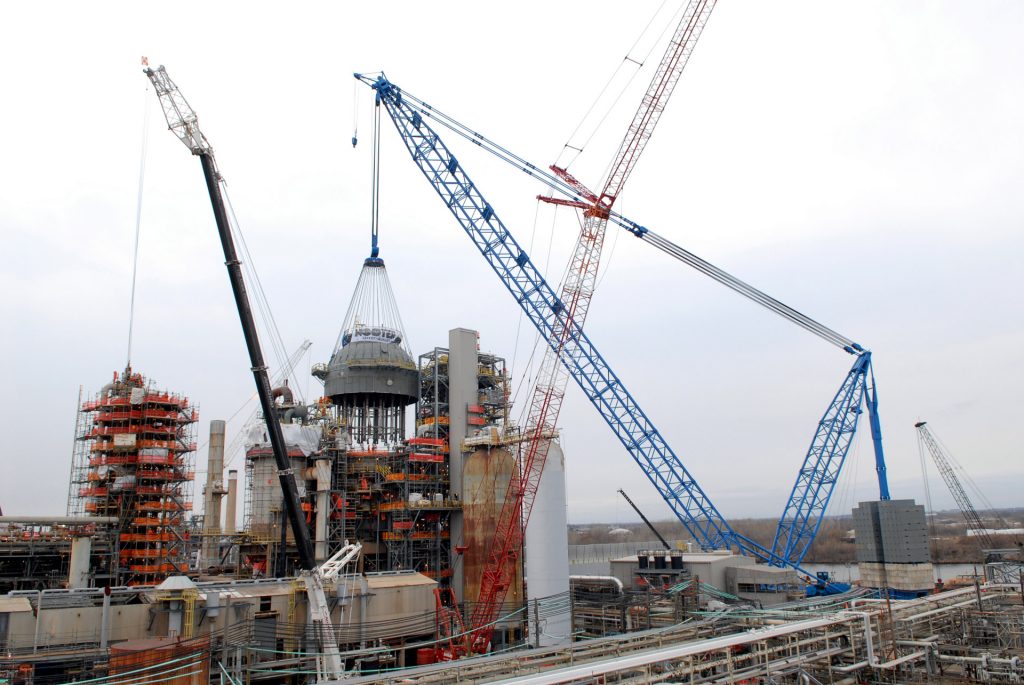
In heavy lift rigging, cranes and other mechanical equipment are used to safely and securely lift heavy cargo.
Cranes can lift a variety of loads depending on their size, capacity, and configuration. Cranes are normally used to lift only one load at a time, but if they are equipped with two or more booms, they can lift multiple loads simultaneously. Additionally, several cranes can be used together to lift one difficult-to-place object in some cases.
In the mechanical construction industry, heavy lift rigging is a process used to lift large pieces of equipment and machinery which are too large and heavy to be lifted and moved without the assistance of other equipment.
Learn about Mechanical Construction: The Mechanical Construction Guidebook
As well as construction, heavy lift rigging is used in many other industries, such as oil & gas extraction (offshore drilling rigs), civil engineering (bridges), and manufacturing processes (aircraft assembly lines).
Why is Rigging Important?

Construction is one of the most demanding segments of the economy. In order to complete projects on time and within budget, it requires specialized machinery, equipment, and personnel.
In mechanical construction, rigging engineering, design, and equipment are used to lift heavy objects and support them.
In most cases, rigging is part of the critical path of a construction project which means that focus, expertise, and planning must be built around that particular segment. Rigging engineering is a specialty that requires years of training and experience. The skills and knowledge needed to design, build and inspect rigging systems are highly specialized. Riggers work in every industry where lifting or moving heavy objects is necessary.
A rigging-required object could weigh over a million pounds and cost millions to fabricate and install. For this, it is essential to have the right people, systems, safety, and equipment in order to successfully complete the lift in one attempt.
The rigging engineer is responsible for the design and construction of all rigging equipment and systems. The engineer must ensure that all rigging components meet or exceed industry standards and applicable regulations. They also ensure that the equipment is safe to use, durable, cost effective and meets requirements for performance, usability and reliability.
The History of Heavy Lift Rigging

Rigging has been used since ancient times when humans first began building structures.
The first structures were built with materials such as stone, brick and clay bricks. These materials were very heavy and hard to move around, so they needed a way to be lifted up into place.
This was done using ropes and pulleys, which allowed people to pull on one end of the rope while another person held onto the other end at ground level.
The first known use of rope in construction was by the Egyptians during the building of the Great Pyramid at Giza. The ropes were made from papyrus, which is still used today to make fishing nets in Egypt.
See the rope systems they used in Egypt here.
During the Roman Empire, ropes were made from hemp, which was a common crop in Egypt and Gaul (France). Ropes were also made from flax, which is another common crop that is still grown today.
In medieval times, ropes were made with twisted strands of hemp or flax fibres braided together into one long rope. This type of rope was used for many purposes including lashing together two trees as a form of scaffolding to build houses or barns. It is said that this type of rope helped build many of the great cathedrals throughout Europe during this time period.
In 1650 AD Samuel Bentham invented what we now call wire rope by twisting together thin strands of iron into one long strand that could be used as a hoisting mechanism for lifting heavy objects such as cannonballs out of ships’ holds or onto deck during battles at sea.
Today, rigging takes place on almost every construction site from lifting million pound reactors in a refinery to placing large scale industrial HVAC systems on the roof of an automotive plant.
How Rigging is Calculated

In an overhead lift, the load weight determines the specifications of the equipment used. The crane or hoist, crane hook, and slings and shackles that connect the hook to the load are all crucial equipment in the lift.
You can identify the weight of a load in several ways.
Ideally, weight should be provided by the manufacturer of all delivered equipment or fabricated components. On mechanical equipment this weight may be indicated on the manufacturer’s name plate, but often it will be cross-referenced to design drawings and specifications.
Maintenance work may be required after equipment has been in use for several years. It is necessary to include the weight of the added components or structure in the lift weight when the item weighs more than when it was originally installed. In mechanical construction often equipment is delivered in the “dry” condition and the weight of the internal fouling in the volume of equipment MUST BE considered.
Weight information can also be found on the bill of lading or shipping documentation. Smaller and lighter loads can be weighed on industrial floor scales. Weight specifications may be included in a catalog or product brochure if the load is a product or piece of machinery.
You will need to calculate the load weight if no load weight information has been provided. The following formula can be used to determine the volume and material of the load:
- Load weight = weight per volume * total volume
If the material weighs 100 pounds per cubic foot and you have 100 cubic feet of volume, the weight would be:
100 * 100 = 10,000 lbs.
Real Life Examples of Rigging in Action
FCCU Regenerator Air Grid Replacement completed by Nooter.
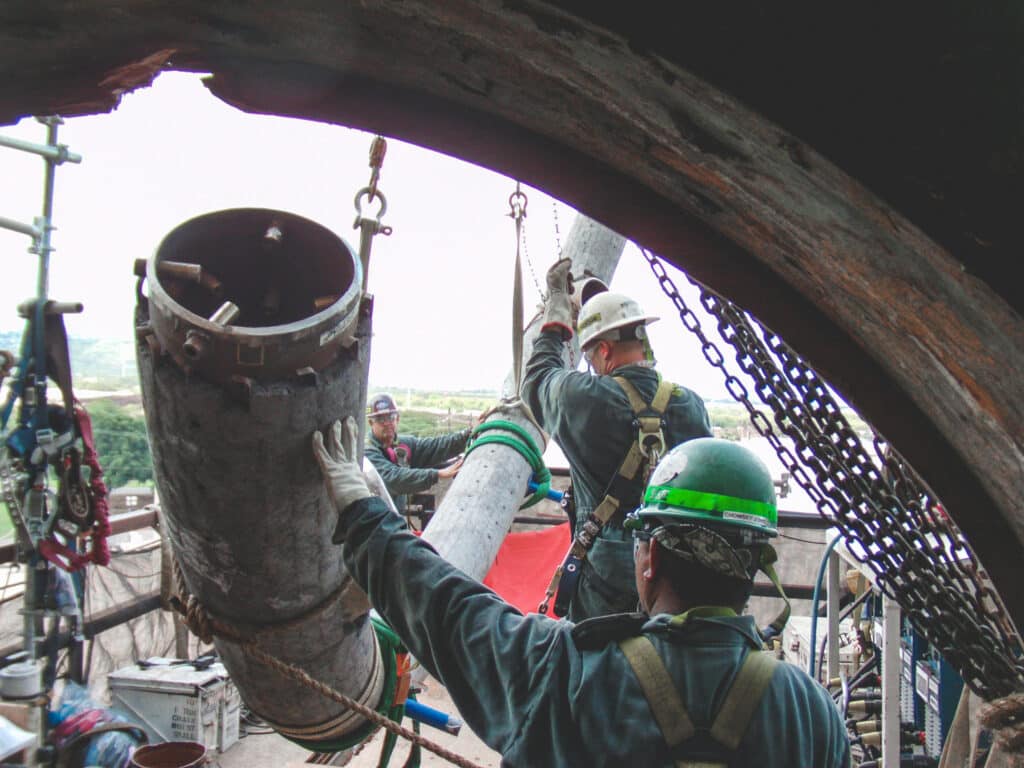
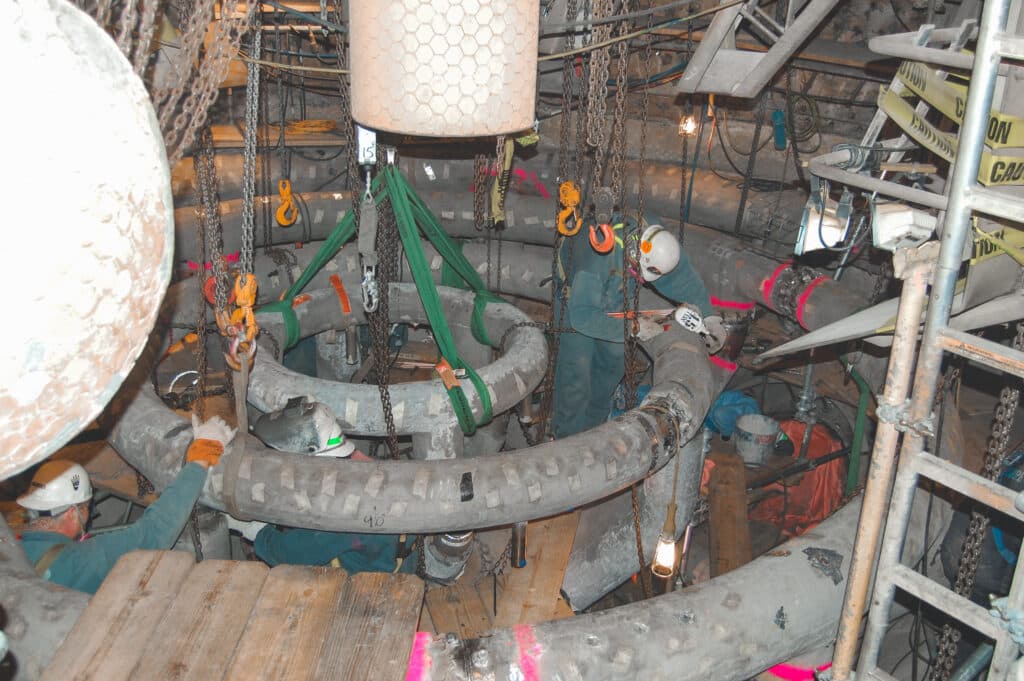
These pictures illustrate how the air grid was divided into thirds for the two largest outer rings, halves for the outer center ring, and full for the center ring.
The grid pieces would then be hoisted from multiple points and slowly lowered into the man-way of the regenerator, where they would be welded together and connected to the hub.
- Ring sections 10,000lbs to 33,000 lbs/section
- Ring 4 – 24 ft in diameter
- Ring 3 – 16 ft in diameter
- Ring 2 – 9 ft in diameter
- Ring 1 – 4.6 ft in diameter
FCCU Air Grid Replacement completed by Nooter.
Our rigging crew connected 64 chain hoists from a Lampson Transi-Lift to raise a 50ft – diameter air grid.


Purpose of this complex rigging?
Simply put, our rigging engineers discovered that if not supported properly, the 50-foot air grid would crumble to pieces.
Each hoist carried a load of about 2.3t.
FCCU Regenerator Head Replacement completed by Nooter.
This FCCU Regenerator Head is what sits on top of the above air grid.
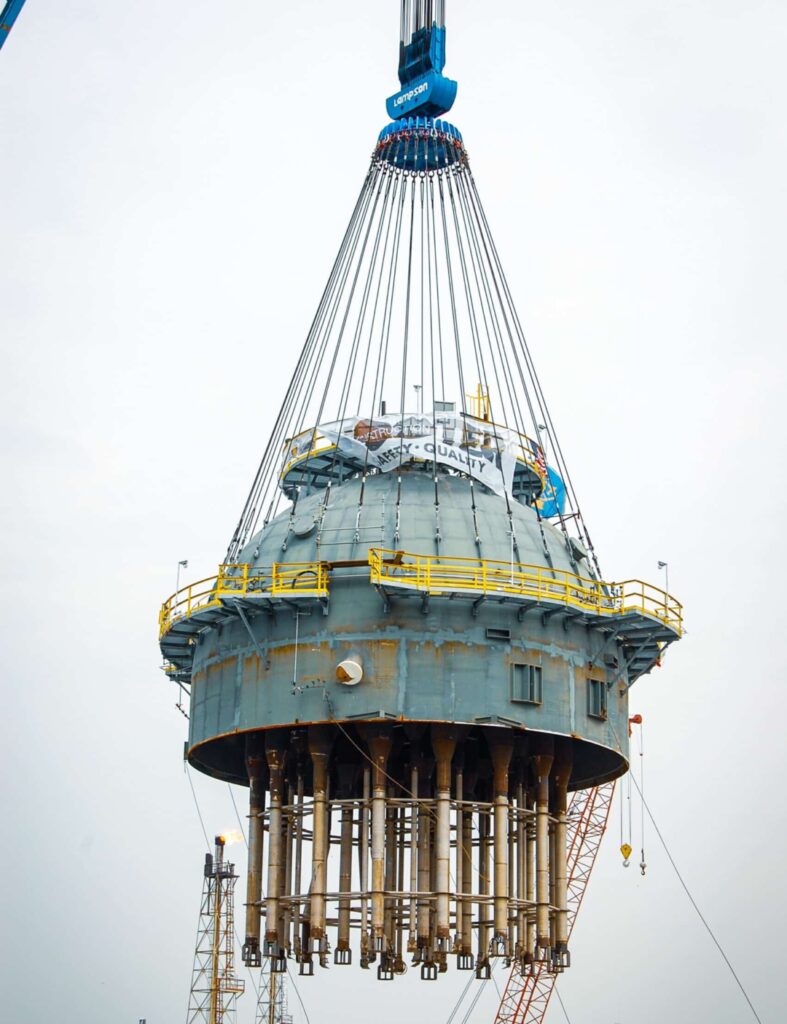
This head weighs in at 1,600,000lbs (725.6t).
Coke Drum Replacement completed by Nooter.
This incredible crane lift consists of a Coker Derrick structure weighing in at 924,000 lbs.
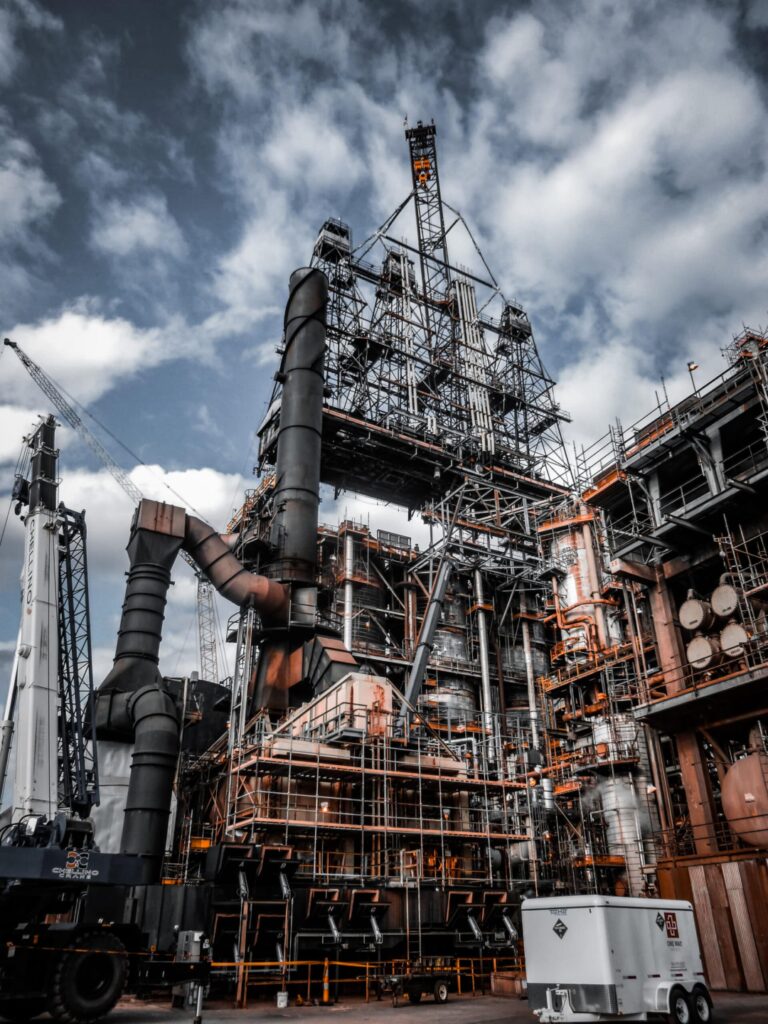
With the lifted load + rigging = maximum weight of 1,134,815 lbs
Counter weight weighing in at 2,159,000 lbs
Safety and Rigging
The process of lifting heavy objects is crucial in the construction industry, but it also poses a great risk if not done correctly. Heavy lift rigging involves lifting heavy material with the use of cranes or other types of machinery such as trucks. This technique is used in various industries including mining, marine construction, oil and gas, and civil engineering projects.
As a result, there are many regulations governing heavy lift rigging operations in order to ensure safety for both the workers and for others who may be affected by these activities.
The Occupational Health & Safety Act (OHSA) states that employers have a duty to protect their employees at work against risks that could cause injury or illness.
See OSHA Regulations on Hoisting and Rigging here.
These risks include working at heights as well as exposure to dangerous chemicals and gases/vapours present on site which can cause harm if inhaled/ingested; therefore, it’s important that all employers follow strict safety procedures when performing any type of work at height – including rigging operations with cranes or other types of machinery.
See OSHA Regulations on Fall Protection here.
Summary of Heavy Lift Rigging
Rigging is where the “Art of Construction” has to mold with the “Science” of Construction.
A rigging-required object could weigh over a million pounds and cost millions to fabricate and install. For this, it is essential to have the right people, systems, safety, and equipment in order to successfully complete the lift in one attempt.
In an overhead lift, the load weight determines the specifications of the equipment used. The crane or hoist, crane hook, and slings and shackles that connect the hook to the load are all crucial equipment in the lift.
There are many OSHA regulations governing heavy lift rigging operations in order to ensure safety for both the workers and for others who may be affected by these activities.
Nooter’s Rigging Services are Unmatched
When it comes to heavy lift rigging in mechanical construction, you can not afford any mistakes.
At NOOTER, we have over 125 years of experience in rigging and design analysis, calculations, and consulting services to meet any complexity of your project.
If you wish to know more about our mechanical services, please contact us using the button below!





